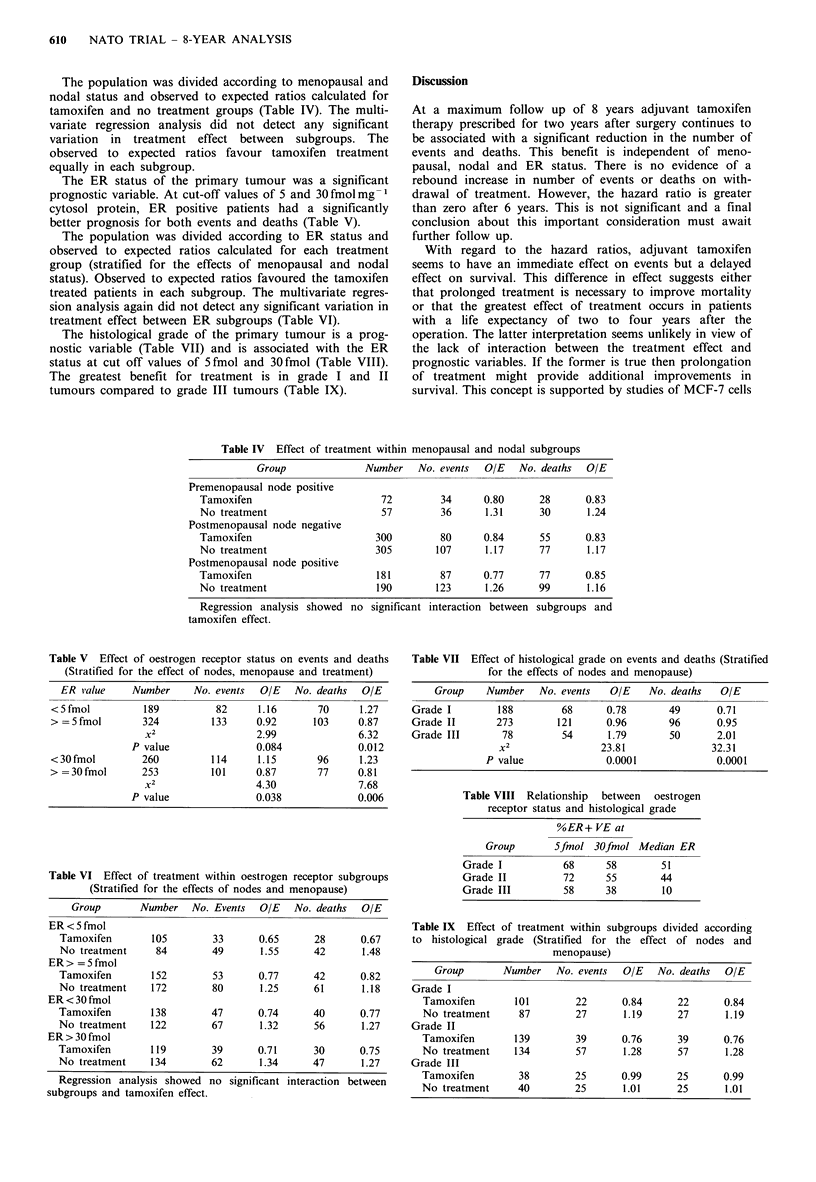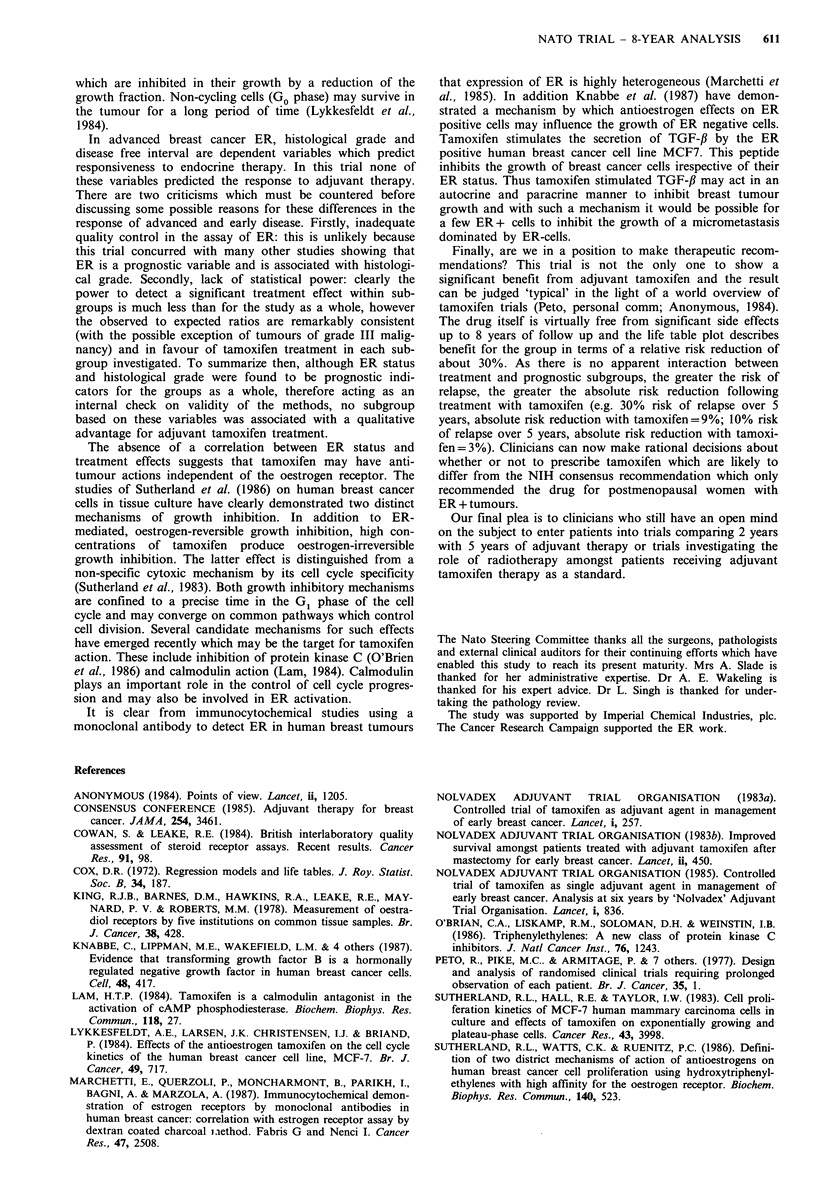Abstract
At a maximum follow up of 8 years (median 5 years 6 months) in a randomised trial of adjuvant tamoxifen versus no treatment as therapy for early breast cancer, a significant advantage persists for patients receiving 20 mg of tamoxifen daily for 2 years. This advantage is independent of menopausal status, stage, grade and ER status. Log hazard rate analysis fails to demonstrate a rebound effect on stopping the drug and suggests that more prolonged treatment might further improve results.
Full text
PDF



Selected References
These references are in PubMed. This may not be the complete list of references from this article.
- Cowan S., Leake R. E. British interlaboratory quality assessment of steroid receptor assays. Recent Results Cancer Res. 1984;91:98–103. doi: 10.1007/978-3-642-82188-2_13. [DOI] [PubMed] [Google Scholar]
- King R. J., Barnes D. M., Hawkins R. A., Leake R. E., Maynard P. V., Roberts M. M. Measurement of oestradiol receptors by five institutions on common tissue samples. Br J Cancer. 1978 Sep;38(3):428–430. doi: 10.1038/bjc.1978.224. [DOI] [PMC free article] [PubMed] [Google Scholar]
- Knabbe C., Lippman M. E., Wakefield L. M., Flanders K. C., Kasid A., Derynck R., Dickson R. B. Evidence that transforming growth factor-beta is a hormonally regulated negative growth factor in human breast cancer cells. Cell. 1987 Feb 13;48(3):417–428. doi: 10.1016/0092-8674(87)90193-0. [DOI] [PubMed] [Google Scholar]
- Lam H. Y. Tamoxifen is a calmodulin antagonist in the activation of cAMP phosphodiesterase. Biochem Biophys Res Commun. 1984 Jan 13;118(1):27–32. doi: 10.1016/0006-291x(84)91062-3. [DOI] [PubMed] [Google Scholar]
- Lykkesfeldt A. E., Larsen J. K., Christensen I. J., Briand P. Effects of the antioestrogen tamoxifen on the cell cycle kinetics of the human breast cancer cell line, MCF-7. Br J Cancer. 1984 Jun;49(6):717–722. doi: 10.1038/bjc.1984.113. [DOI] [PMC free article] [PubMed] [Google Scholar]
- Marchetti E., Querzoli P., Moncharmont B., Parikh I., Bagni A., Marzola A., Fabris G., Nenci I. Immunocytochemical demonstration of estrogen receptors by monoclonal antibodies in human breast cancer: correlation with estrogen receptor assay by dextran-coated charcoal method. Cancer Res. 1987 May 1;47(9):2508–2513. [PubMed] [Google Scholar]
- O'Brian C. A., Liskamp R. M., Solomon D. H., Weinstein I. B. Triphenylethylenes: a new class of protein kinase C inhibitors. J Natl Cancer Inst. 1986 Jun;76(6):1243–1246. [PubMed] [Google Scholar]
- Sutherland R. L., Hall R. E., Taylor I. W. Cell proliferation kinetics of MCF-7 human mammary carcinoma cells in culture and effects of tamoxifen on exponentially growing and plateau-phase cells. Cancer Res. 1983 Sep;43(9):3998–4006. [PubMed] [Google Scholar]
- Sutherland R. L., Watts C. K., Ruenitz P. C. Definition of two distinct mechanisms of action of antiestrogens on human breast cancer cell proliferation using hydroxytriphenylethylenes with high affinity for the estrogen receptor. Biochem Biophys Res Commun. 1986 Oct 30;140(2):523–529. doi: 10.1016/0006-291x(86)90763-1. [DOI] [PubMed] [Google Scholar]


